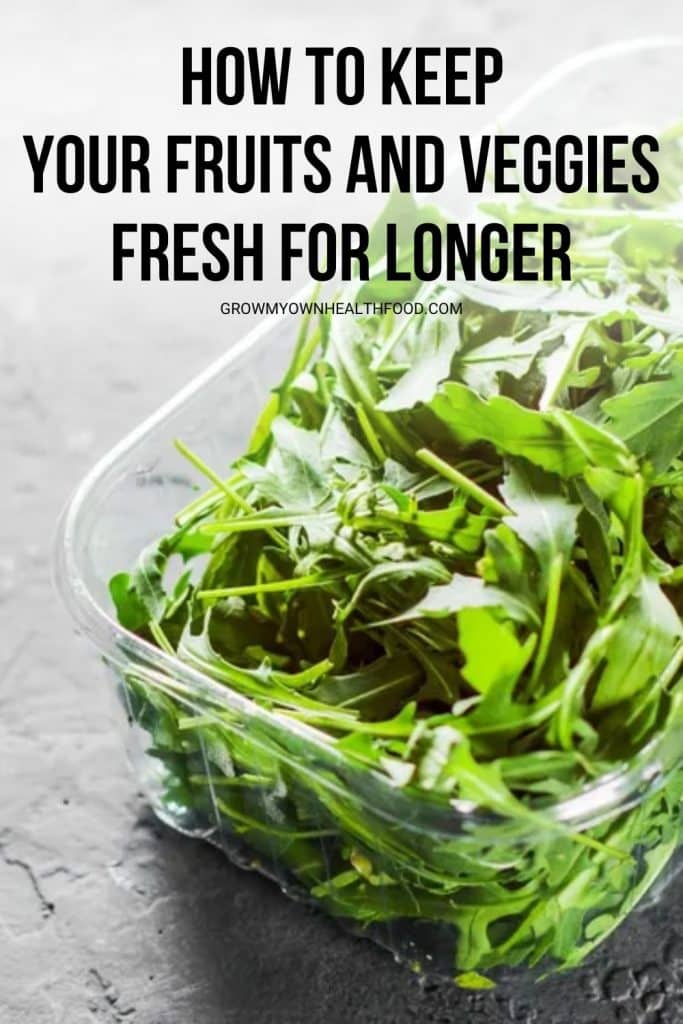Nothing is as satisfying as growing, harvesting, and eating homegrown food. All the love and time you spent nurturing the crops will show in the flavors of your harvest. One of the major perks of growing your own food is your ability to take ingredients straight from your garden to the kitchen table, but some harvests will require storage for later use. Once certain types of produce leave the ground, they begin the countdown to deterioration, losing their flavor as time passes. Here are some tips for keeping your fruits and veggies fresh for longer so that you can continue to enjoy all the benefits and flavors of homegrown food.
Be Careful of Certain Food Pairings
Some ingredients don’t make good roommates. Some fruits and veggies release a gas called ethylene, which speeds up the ripening process. Meanwhile, other produce—including apples, lemons, and collard greens—can be sensitive to this gas. When these two types of produce sit next to each other, they affect one another’s quality and taste. Taking extra care when you pair up foods for storage ensures that you don’t hinder the freshness of your harvested goods or compromise their flavors.
Explore Different Storage Methods
- Made of ABS plastic, food safe, durable and high quality. It has good toughness and hardness higher transparency.
- Include 6 clear storage boxes: 1 x (4.29 x 3.9 x 3.51); 2 x (5.85 x 4.29 x 3.51); 2 x (12.29 x 4.29 x 3.51 with removable drain tray); 1 x (7.8 x 4.29 x 3.51 with removable drain tray).
- Space saving: keep food fresh and organize your food/drinks/small parts; they used for refrigerator, freezer, table, desk, cabi
Prices pulled from the Amazon Product Advertising API on:
Product prices and availability are accurate as of the date/time indicated and are subject to change. Any price and availability information displayed on [relevant Amazon Site(s), as applicable] at the time of purchase will apply to the purchase of this product.
Certain fruits and veggies thrive in certain storage conditions. For example, there are various ways to properly store various types of onions, from sealing them up to simply placing them on the counter. Exploring the myriad of storage methods available for all produce types allows you to find the best way to care for your harvested crops while they wait for you to use them.
Don’t Skip Storage Prep and Prewashes
- NEW PACKAGING: Due to the global supply shortage, packaging may vary, but you will still receive the same great product
- CLEANER PRODUCE: Arm & Hammer Fruit and Vegetable Wash eliminates over 90% of pesticide residue (commonly used Thiabendazole Pesticide) when used as directed.
- BETTER RESULTS: With the help of just 7 ingredients, Arm & Hammer Fruit and Vegetable Wash removes surface pesticides 4x better than water alone when used as directed.
Prices pulled from the Amazon Product Advertising API on:
Product prices and availability are accurate as of the date/time indicated and are subject to change. Any price and availability information displayed on [relevant Amazon Site(s), as applicable] at the time of purchase will apply to the purchase of this product.
Before you put your fruits and veggies away, make sure to prep them. Most people immediately place their ingredients in storage, but taking a few extra steps can ensure they stay fresh and in prime condition for longer. Rinsing and wrapping certain foods helps them stay hydrated and prevents factors such as lingering bacteria or bugs from accelerating their ripening process. Popular prep methods include rinsing berries in vinegar, swaddling herbs and greens in paper towels, and patting lettuce dry before storage.
Vegetable Storage Wrap Up
Keeping your fruits and veggies fresh goes beyond preserving their flavors and ripeness. It also ensures that you receive optimal nutritional value. Produce such as leafy greens tend to decline in nutritional value over time, but proper storage maintains the quality of your harvested goods, allowing you to reap their benefits and fully enjoy the satisfaction of the meals you make with them.








